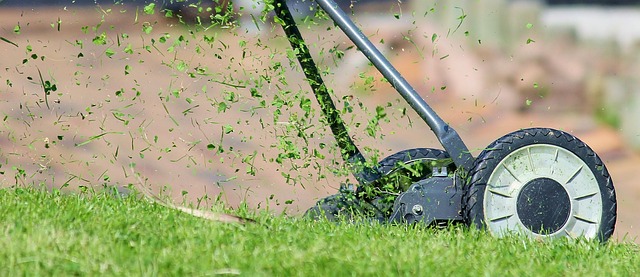Artificial Grass Overview - Types, Prices, Benefits and More
Artificial grass, also known as synthetic turf, has become increasingly popular for both residential and commercial applications. This low-maintenance alternative to natural grass offers a lush, green appearance year-round without the need for watering, mowing, or fertilizing. In this comprehensive guide, we'll explore the various types of artificial grass, their prices, benefits, and other essential information to help you make an informed decision.

What are the main types of artificial grass?
Artificial grass comes in several types, each designed for specific uses and locations:
-
Polyethylene (PE) grass: This is the most common type, known for its soft texture and natural appearance. It’s ideal for residential lawns, playgrounds, and landscaping.
-
Polypropylene (PP) grass: A more affordable option, PP grass is less durable but suitable for indoor applications or areas with light foot traffic.
-
Nylon grass: The most durable and heat-resistant type, nylon grass is often used in high-traffic areas, sports fields, and putting greens.
-
Hybrid grass: A combination of different fibers, hybrid grass aims to provide the best features of multiple types, offering durability and a natural look.
How much does artificial grass cost?
The cost of artificial grass can vary significantly based on factors such as quality, type, and installation requirements. Here’s a general pricing guide:
| Quality Level | Material Cost (per sq. ft.) | Installation Cost (per sq. ft.) | Total Cost (per sq. ft.) |
|---|---|---|---|
| Economy | $2 - $4 | $3 - $5 | $5 - $9 |
| Mid-Range | $4 - $6 | $5 - $7 | $9 - $13 |
| Premium | $6 - $10 | $7 - $10 | $13 - $20 |
Prices, rates, or cost estimates mentioned in this article are based on the latest available information but may change over time. Independent research is advised before making financial decisions.
Where can I find reputable artificial grass dealers?
To find reliable artificial grass dealers in your area, consider the following options:
-
Local landscaping companies: Many landscapers now offer artificial grass installation services.
-
Home improvement stores: Large chains like Home Depot and Lowe’s often carry artificial grass products and can recommend installers.
-
Specialized artificial turf companies: Look for businesses that focus primarily on synthetic grass installation.
-
Online marketplaces: Websites like Angi (formerly Angie’s List) and HomeAdvisor can connect you with local artificial grass professionals.
-
Manufacturer websites: Many artificial grass manufacturers have dealer locator tools on their websites.
What are the different types of artificial grass based on use or location?
Artificial grass is designed for various applications and locations:
-
Residential lawns: Soft, natural-looking grass with medium pile height for everyday use.
-
Commercial landscapes: Durable, low-maintenance options for high-traffic areas.
-
Sports fields: Specialized turf with shock-absorbing properties and specific performance characteristics for different sports.
-
Putting greens: Short-pile grass designed to mimic the roll and speed of real golf greens.
-
Pet areas: Grass with enhanced drainage and odor-control features for pet-friendly spaces.
-
Playgrounds: Soft, cushioned grass with fall protection properties for children’s safety.
What are the key benefits of installing artificial grass?
In the United States, artificial grass has gained popularity due to its numerous advantages:
-
Water conservation: Artificial grass eliminates the need for regular watering, saving thousands of gallons annually.
-
Low maintenance: No mowing, fertilizing, or pest control required, saving time and money.
-
Year-round green: Maintains a lush appearance regardless of weather conditions or seasons.
-
Durability: Can withstand heavy foot traffic and extreme weather without damage.
-
Allergen reduction: Eliminates grass pollen, benefiting allergy sufferers.
-
Pet-friendly options: Specially designed varieties offer easy cleaning and odor control for pet owners.
-
Versatility: Suitable for various applications, from residential lawns to sports fields and indoor spaces.
How do I choose the right artificial grass for my needs?
Selecting the ideal artificial grass depends on several factors:
-
Intended use: Consider whether it’s for a residential lawn, sports field, or commercial space.
-
Climate: Choose a product that can withstand your local weather conditions.
-
Pile height and density: Determine the desired look and feel of the grass.
-
Color and texture: Select a variety that closely resembles natural grass in your area.
-
Drainage capabilities: Ensure proper water flow, especially in areas with heavy rainfall.
-
UV resistance: Look for products with UV stabilizers to prevent fading and degradation.
-
Warranty: Compare warranty offerings from different manufacturers and installers.
-
Budget: Balance your desired features with your available budget.
In conclusion, artificial grass offers a versatile, low-maintenance alternative to natural turf with various types and applications. By considering factors such as intended use, climate, and budget, you can select the perfect artificial grass solution for your specific needs. Whether you’re looking to enhance your home’s curb appeal, create a durable sports surface, or design a pet-friendly outdoor space, artificial grass provides a practical and attractive option.




